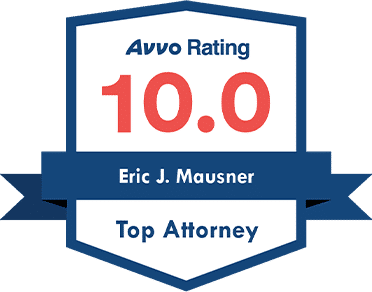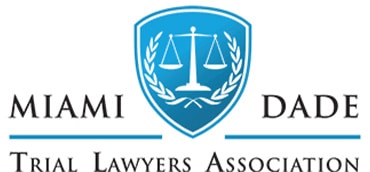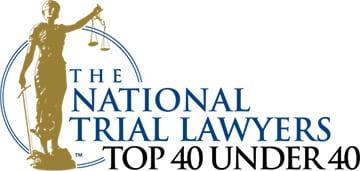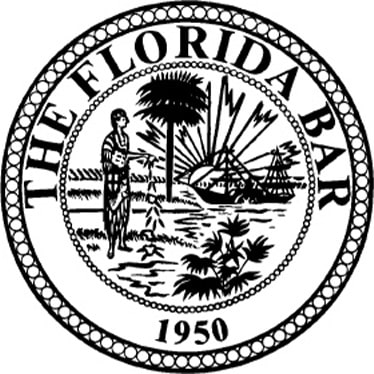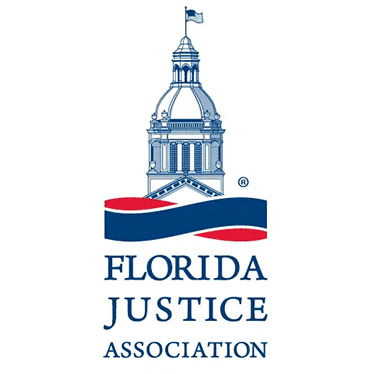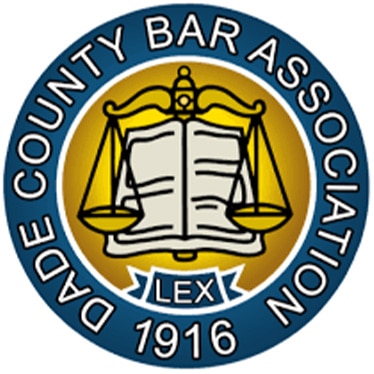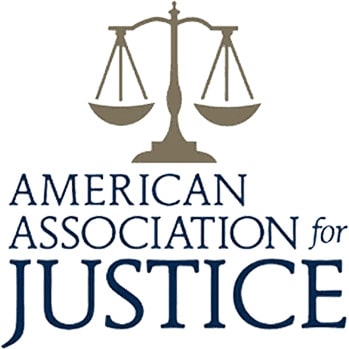A Florida car crash can leave you dealing with injuries, medical bills, and a confusing allocation of fault under the state’s modified comparative negligence system. The 51% bar rule means a plaintiff who is 51 percent or more at fault cannot recover damages from another party, so understanding how fault is measured directly affects your ability to obtain compensation. This article explains the 51% bar rule, how House Bill 837 changed Florida’s fault law and statute of limitations, the evidence and calculations used to assign percentages, and when PIP/no-fault interacts with a tort claim. You will also find numerically illustrated examples of damage reductions, common crash scenarios with typical fault splits, and practical steps an attorney can take to reduce your assigned fault. Throughout, we integrate clear, actionable guidance so you can preserve evidence, evaluate offers, and decide whether to pursue a legal claim.
What Is Florida’s 51% Bar Rule and How Does It Affect Car Accident Claims?
Florida’s 51% bar rule prevents recovery when a plaintiff’s percentage of fault reaches 51 percent or higher. This doctrine is the core of Florida’s modified comparative negligence scheme: damages are reduced by the plaintiff’s share of fault and barred entirely at 51 percent, producing a sharp “cliff” where small changes in assigned fault alter recovery dramatically. The rule shifts tactical emphasis to gathering strong exculpatory evidence and contesting insurer or investigator fault allocations. Below we define modified comparative negligence, summarize House Bill 837’s key changes, contrast pure and modified systems, and show when the cliff effect eliminates recovery.
What Is Modified Comparative Negligence in Florida?
Modified comparative negligence allocates responsibility between parties in percentage terms and reduces recoverable damages by the plaintiff’s percentage of fault. Under this doctrine, if you are assigned 20 percent fault for a crash that causes $50,000 in damages, your recoverable damages would be $40,000 because the court deducts your 20 percent share. The mechanics require proving both the defendant’s negligence and the causal link to your injuries while presenting evidence that minimizes your share. This system rewards precise fact-gathering, not guesswork, and makes early documentation and expert analysis critical to preserving recovery potential.
How Did House Bill 837 Change Florida’s Fault Laws in 2023?
House Bill 837, effective March 24, 2023, made structural changes to Florida negligence law that directly affect fault and procedural timelines. The bill moved Florida from a pure comparative negligence approach toward a modified scheme with a 51% bar and also altered the statute of limitations for many negligence claims that accrue after the effective date. These changes mean plaintiffs must be more attentive to both how fault percentages are assigned and how quickly claims must be filed. Understanding the effective date and its interaction with when the injuries accrued is essential to avoid forfeiting rights under the revised statutory framework.
What Is the Difference Between Pure and Modified Comparative Negligence?
Pure comparative negligence allows plaintiffs to recover damages regardless of their percentage of fault, with recovery reduced proportionally; modified comparative negligence imposes a cutoff (the 51% bar) that completely prevents recovery once the plaintiff’s fault hits the threshold. Under pure comparative negligence, a plaintiff assigned 90 percent fault could still recover 10 percent of damages, while under Florida’s modified rule that same plaintiff would recover nothing. The distinction changes litigation strategy because in a modified regime, contesting even a small increment of assigned fault can mean the difference between a meaningful recovery and no recovery at all.
When Are You Barred from Compensation Under the 51% Rule?
You are barred from recovering when a factfinder assigns you 51 percent or more fault for the accident, producing the so-called cliff effect where a single percentage point can eliminate all recovery. Small factual disputes, such as whether you braked or whether the defendant failed to yield, can swing an allocation across the bar. Plaintiffs and their attorneys commonly challenge high fault findings with independent accident reconstruction, alternative witness accounts, and medical timelines designed to show causation and shift responsibility back to other drivers. Preserving every piece of evidence at the scene and documenting injuries promptly helps prevent a high-fault ruling that would bar recovery.
How Is Fault Determined in Florida Car Accidents?
Fault in Florida car accidents is determined by weighing evidence, applying traffic law standards, and estimating causal responsibility as percentages among involved parties. Decision-makers, insurance adjusters, mediators, judges, or juries assess the relative conduct of drivers against duties imposed by traffic statutes and general negligence law, then assign fault percentages reflecting causation and comparative blame. The types of evidence and the forum (settlement vs. court) both shape how percentages are calculated. Below we identify the primary evidence types, compare insurer and court assessments, and list traffic law violations and contextual factors that commonly influence fault.
What Evidence Is Used to Establish Fault in Florida Accidents?
Evidence typically used to determine fault includes police crash reports, traffic citations, photographs, video (dashcam or surveillance), witness statements, and expert accident reconstruction. Police reports provide contemporaneous officer observations and citations that frame preliminary fault theories, while photographs and video offer objective scene and vehicle damage indicators. Witness statements can corroborate timing, signals, or unusual maneuvers, and reconstruction experts synthesize physical evidence to model speeds and striking points. Each evidence type has different persuasive weight; combining multiple sources normally produces the most reliable fault allocation.
The primary evidence types and their roles are:
- Police Reports and Citations: Supply official findings and assigned violations.
- Photographs and Video: Show positions, damage, and road conditions.
- Witness Statements: Provide contemporaneous recollections of actions.
- Accident Reconstruction Reports: Offer technical analysis of speeds and impact.
These items complement one another, and presenting them in a coordinated way strengthens a plaintiff’s argument. The next topic compares how insurers use similar evidence differently from courts.
Evidence Type | What It Shows | Weight in Determining Fault |
Police Report | Officer observations, diagrams, citations | Medium; persuasive but not dispositive |
Photographs/Video | Scene layout, vehicle damage, skid marks | High; objective visual proof |
Witness Statements | Sequence of events, signal use | Medium; corroborative when consistent |
Reconstruction Expert | Speed estimates, point of impact analysis | High; can shift percentage allocations |
How Do Insurance Companies and Courts Assess Fault Percentages?
Insurance adjusters and courts both aim to assign comparative fault, but their methods and incentives differ: insurers often evaluate financial exposure and may emphasize defenses that increase plaintiff fault, while courts focus on legal causation and admissible evidence. Adjusters review claims with a business lens and may rely on company-employed experts or selective interpretation of the crash report to support low offers. Judges and juries evaluate admissible evidence, testimony, and expert opinions under procedural rules, often giving more weight to neutral or independently sourced reconstructions. Knowing these differing motivations helps plaintiffs tailor evidence collection and presentation.
Common differences in assessment approach:
- Insurers: Incentivized to reduce payouts; may prioritize speed.
- Courts/Juries: Evaluate admissibility and credibility; formal procedures apply.
- Experts: Court-qualified experts can counter biased insurer reconstructions.
Strategic evidence preservation and obtaining neutral expert analysis reduces the gap between insurer assumptions and likely judicial findings. The following table summarizes how evidence typically influences fault in each forum.
Forum | Typical Emphasis | Strategic Counter |
Insurance Adjuster | Quick liability screens, cost control | Early, organized evidence submission |
Court/Jury | Credibility, admissible expert testimony | Neutral reconstruction, demonstratives |
Arbitration/Mediation | Settlement pressure points | Strong demand letter with damage calculation |
Next, we examine which traffic laws and accident factors most often alter assigned fault.
Which Traffic Laws and Accident Factors Influence Fault Determination?
Specific traffic violations and contextual factors often shape percentage allocations: failure to yield, running red lights or stop signs, following too closely, and improper lane changes frequently indicate negligence. Environmental conditions such as weather, lighting, roadwork, or obstructions also affect reasonable-driver expectations and can reduce or increase assigned fault depending on foreseeability. Driver conduct like distracted driving, speeding, and DUI are aggravating factors that push fault percentages upward and may be decisive in moving a plaintiff over the 51% threshold when combined with other failures. Documenting both the violation and the contextual conditions helps reconstruct a realistic fault allocation and supports arguments to limit plaintiff fault.
Traffic factors that commonly shift fault:
- Failure to Yield: Often assigns majority fault to the non-yielding driver.
- Following Too Closely: Presumption favors the lead vehicle in rear-ends.
- Signal/Sign Violations: Red light or stop sign breaches are strongly persuasive.
- Contextual Conditions: Weather or construction can mitigate or magnify negligence.
Understanding how these legal and factual elements interact allows you to collect targeted evidence and challenge improper fault attributions.
Get Your FREE Case Review Today
How Does Comparative Negligence Impact Your Car Accident Compensation in Florida?
Comparative negligence reduces recoverable damages by multiplying total damages by the defendant-share (1 – plaintiff fault %), and it bars recovery entirely when plaintiff fault reaches 51 percent. The core formula is simple: Recoverable = Total Damages × (1 – PlaintiffFault %). However, real cases hinge on precise calculations of damages (medical bills, lost wages, pain and suffering) and the exact percentage assigned — small changes in percentage produce large differences in net recovery. Below, we present numeric examples in a table, explain the cliff effect at 51 percent, and describe insurer tactics that exploit percentage allocations.
How Is Your Settlement Reduced Based on Your Percentage of Fault?
The calculation of recoverable damages starts with total compensable losses and reduces them by the plaintiff’s percentage of fault. For example, with $100,000 in total damages, a plaintiff assigned 20 percent fault would recover $80,000 because $100,000 × (1 – 0.20) = $80,000. Multiple scenarios illustrate how the same damages yield different results as fault percentages vary, which highlights why disputing even modest fault assignments matters. Accurate documentation of medical costs and future care also affects the denominator in the calculation and can magnify the benefit of lowering assigned fault.
Injury/Claim Scenario | Assigned Fault % (Example) | Recoverable Amount (Calculation) |
Moderate injury, $50,000 damages | Plaintiff 20% | $50,000 × 0.80 = $40,000 |
Severe injury, $200,000 damages | Plaintiff 30% | $200,000 × 0.70 = $140,000 |
Catastrophic, $1,000,000 damages | Plaintiff 10% | $1,000,000 × 0.90 = $900,000 |
These numeric examples show how fault percentage directly scales recovery, making precise allocation and strong evidence essential to maximize compensation.
What Happens When Your Fault Reaches or Exceeds 51%?
When a factfinder assigns a plaintiff 51 percent or more fault, the plaintiff is legally barred from recovering any damages from the defendant under Florida’s rule — this is the cliff effect. Practically, this means that defense strategies aiming to push a plaintiff beyond 50 percent can entirely defeat a claim regardless of the injury’s severity. To counter this, attorneys vigorously challenge disputed facts, offer alternative causation theories, and bring in independent experts to reshape percentages. Early, thorough investigation and aggressive rebuttal of biased insurer narratives are the primary defenses against a 51 percent finding.
How Do Insurance Companies Use Fault to Limit Payouts?
Insurance companies often use fault allocation as a lever to reduce or deny payouts. Common tactics include selective evidence emphasis, siloed reconstructions, and highlighting plaintiff conduct while downplaying defendant violations. Insurers may also argue mitigating factors like pre-existing conditions or intervening causes to shift fault. Countermeasures include commissioning neutral reconstructions, collecting contemporaneous witness statements that undermine insurer assertions, and compiling comprehensive medical timelines that connect defendant negligence to the claimant’s damages. An organized evidentiary response can blunt insurer tactics and improve settlement outcomes.
Insurer tactics and attorney countermeasures:
- Selective Evidence Presentation: Attorneys submit fuller, contextual evidence.
- Biased Reconstructions: Use independent reconstruction experts to rebut.
- Witness Coaching/Discounting: Preserve and memorialize statements promptly.
Presenting a coherent, multi-source case diminishes insurer leverage and increases the chances of a fair allocation.
What Are Common Florida Car Accident Scenarios and Typical Fault Allocations?
Certain crash types frequently produce predictable fault patterns, although each case depends on unique facts and evidence. Rear-end collisions, intersection and left-turn crashes, and collisions involving impaired or distracted drivers have recurring allocation tendencies that inform expectations during claim negotiations and litigation. Knowing typical splits helps claimants understand likely starting positions in negotiations and the evidence needed to rebut presumptions. The table below compares accident types, typical allocations, and the most persuasive evidence for each.
Who Is Usually at Fault in Rear-End Collisions in Florida?
In rear-end crashes, there is a common presumption that the rear driver is at fault for following too closely, but exceptions exist, such as sudden and unexpected stops, mechanical failure, or a lead vehicle’s unsafe lane change. Typical allocations might start with the rear driver at 70–90 percent fault absent rebuttal evidence, but photographic evidence, dashcam footage, and witness accounts of an abrupt cut-in or brake lights failing can shift those percentages. Attorneys frequently use scene photos, vehicle event data recorder (EDR) outputs when available, and witness statements to counter the presumption and reduce assigned plaintiff fault.
Accident Type | Typical Fault Allocation (plaintiff/defendant) | Key Evidence Used |
Rear-end collision | 10–30% / 70–90% | Photos, dashcam, brake light status |
Left-turn at intersection | 20–60% / 40–80% | Signal timing, witness, video |
Lane-change / sideswipe | 30–50% / 50–70% | Lane markings, witness accounts |
How Is Fault Assigned in Intersection and Left-Turn Accidents?
Left-turn collisions commonly place substantial fault on the turning driver because left turns require yielding to oncoming traffic, but signal malfunctions, obstructed views, or ambiguous right-of-way can complicate assignments. Typical left-turn splits might range from 60/40 to 80/20 against the left-turning driver, but video evidence showing proper signaling, sudden deceleration by the other vehicle, or an unexpected pedestrian/obstruction can reduce assigned fault. Timely collection of traffic-camera footage, signal phase data, and credible witness testimony is often decisive in reshaping percentages.
How Do Distracted Driving, Speeding, and DUI Affect Fault Percentages?
Aggravating behaviors such as distracted driving, speeding, and DUI usually increase assigned fault and can push a plaintiff across the 51% bar if combined with other negligent acts. For example, proof that a driver was texting or speeding can shift fault appreciably because these behaviors breach clear duties of care and are proximate causes of crashes. DUI raises additional legal and practical consequences that often lead to higher fault assignments and influence settlement leverage. Attorneys gather phone records, toxicology reports, and speed estimates to quantify the aggravating conduct and press for allocations reflecting that increased blame.
How aggravating behaviors change fault:
- Distracted Driving: Often increases fault significantly when contemporaneous phone use is documented.
- Speeding: Raises causation significance and can magnify damages.
- DUI: Typically results in heavy fault and may affect insurer defenses.
Collecting objective proof of these behaviors helps translate misconduct into higher allocated fault against the responsible party.
How Does Florida’s No-Fault Insurance System Interact with Fault and Compensation?
Florida’s no-fault system provides Personal Injury Protection (PIP) to cover initial medical expenses and lost wages up to statutory limits, while fault-based tort claims become available when injuries meet the serious injury threshold or when PIP is exhausted. PIP typically covers immediate care without proving fault, but tort claims, where fault percentages matter, seek non-PIP damages such as pain and suffering and future losses. Understanding PIP’s scope, the serious injury threshold, and how fault interacts with tort damages is essential for planning when and how to pursue additional compensation beyond PIP.
What Is Personal Injury Protection Coverage in Florida?
Personal Injury Protection (PIP) is Florida’s no-fault coverage that pays medical expenses, lost income, and certain services regardless of who caused the crash, up to statutory caps. PIP accelerates access to care and reduces initial claim friction, but it is limited in amount and scope and does not cover pain and suffering except when a plaintiff steps outside the no-fault rules. Documentation of medical treatment and timely submission of PIP claims are critical to preserving benefits and demonstrating the severity of injuries when later pursuing tort damages.
When Can You Step Outside the No-Fault System for Serious Injuries?
You may bring a tort claim outside the PIP system when your injuries meet Florida’s statutory serious injury threshold, which typically requires significant, permanent, or disfiguring conditions or other designated categories. Meeting the threshold allows claims for non-economic damages and larger compensatory awards, but the HB 837 changes and statute of limitations adjustments make prompt evaluation and legal advice essential. To document seriousness, collect timely medical records, diagnostic imaging, and treatment plans that clearly link the crash to substantial impairments.
How Does Fault Affect Claims Beyond PIP Coverage?
Once you pursue damages beyond PIP, fault allocations directly reduce non-PIP recoveries under the modified comparative negligence rule; the same percentage formula applies to tort awards. For example, medical bills paid under PIP may be recoverable as offsets or subcomponents of tort damages, but the net tort award is still reduced by your percentage of fault. Therefore, establishing defendant negligence and minimizing your allocated percentage remain central to maximizing compensation beyond PIP benefits, making attorney-led investigation and expert testimony especially valuable.
Contact us today for your free & confidential case review. Our team will help you get the compensation that you deserve.
Why Is Hiring a Florida Car Accident Lawyer Crucial for Fault Disputes and Compensation?
An experienced attorney helps minimize your assigned fault percentage by preserving evidence, commissioning independent reconstructions, and crafting legal arguments that shift responsibility to defendants. Lawyers also navigate the PIP/no-fault interplay, convert medical documentation into persuasive damages narratives, and negotiate with insurers to counter fault-based defenses. When insurers refuse reasonable offers or facts are contested, an attorney can litigate to present expert testimony and demonstrative evidence to a judge or jury. For claimants facing the 51% cliff, legal advocacy can determine whether the claim survives or is lost.
For readers who want professional help evaluating a possible claim, here is the firm’s stated purpose in direct terms: To attract and convert personal injury victims into clients by offering free consultations and securing maximum compensation. Mausner Graham Injury Law is a Miami-based personal injury law firm that offers free and confidential case reviews, operates on a contingency fee basis (no fees unless the firm wins the case), and emphasizes fighting insurance companies to secure maximum compensation. Their attorneys are licensed to practice in Florida and other jurisdictions and have a track record of recovering millions for accident victims.
How Do Attorneys Help Minimize Your Assigned Fault Percentage?
Attorneys take concrete investigative steps, preserving scene evidence, interviewing witnesses promptly, obtaining traffic and surveillance video, and hiring independent accident reconstruction experts, to undermine insurer narratives that over-assign plaintiff fault. They also ensure medical records clearly link treatment to the crash and seek objective corroboration of timelines and causation. By converting technical analysis into clear demonstrations of causation and comparative blame, attorneys can reopen settlement dialogue and reduce a plaintiff’s assigned percentage. These actions materially change negotiation dynamics and can prevent the 51% bar from extinguishing recovery.
Attorney tactics used to reduce fault:
- Independent Reconstruction: Produces neutral, court-admissible models.
- Prompt Witness Preservation: Locks in favorable contemporaneous accounts.
- Comprehensive Medical Documentation: Connects injuries directly to the crash.
When combined, these strategies often lower assigned fault and increase recoverable damages.
What Role Does a Lawyer Play in Negotiating with Insurance Companies?
Lawyers package evidence into demand presentations that highlight weaknesses in insurer theories and demonstrate litigation readiness, encouraging fairer offers. Attorneys know how to leverage expert reports, demonstrative exhibits, and case law arguments to create settlement pressure and to counter lowball offers with credible litigation alternatives. They also handle tactical timing, knowing when to push for mediation or file suit to preserve claims, so negotiations occur from a position of strength. A knowledgeable attorney’s involvement often results in higher net recoveries even after fees are considered.
When Should You Consider Litigation to Protect Your Rights?
You should consider litigation when negotiations stall, when an insurer unfairly over-assigns fault that would bar recovery, or when factual disputes cannot be resolved without formal adjudication. Indicators for filing suit include insurer bad faith, repeated lowball offers despite strong evidence, or complex liability questions requiring court-supervised discovery and expert cross-examination. While litigation involves time and expense, it can shift fault assignments by subjecting contested evidence to rigorous scrutiny and by placing ultimate responsibility in the hands of a neutral factfinder.
What Are Frequently Asked Questions About Florida’s 51% Bar Rule and Car Accident Fault?
This FAQ offers concise, direct answers to the questions claimants most often ask when assessing whether to pursue a fault-based claim in Florida. Each answer gives the essential legal rule, a short example or implication, and immediate next steps to preserve rights. After the FAQs, we provide a final, compassionate invitation to seek guidance if you believe you have a claim.
What Is the 51 Percent Rule in Florida Car Accidents?
The 51 percent rule in Florida bars a plaintiff from recovering damages if the plaintiff is found to be 51 percent or more at fault for the accident. For example, if a plaintiff is assigned 51 percent fault for a crash that caused $100,000 in damages, the plaintiff would recover nothing from other parties because the rule completely eliminates recovery once that threshold is met. This makes tight fault disputes critical to case outcomes.
How Does Comparative Negligence Affect My Settlement in Florida?
Comparative negligence reduces your settlement by the percentage you are assigned: Recoverable = Total Damages × (1 – Plaintiff Fault %). For instance, $50,000 in damages with 20 percent plaintiff fault yields $40,000 recoverable. Small reductions in assigned fault therefore translate directly to larger net recoveries.
When Did Florida Change Its Comparative Negligence Law?
Florida’s statutory changes under House Bill 837 took effect on March 24, 2023, moving the state toward a 51% bar and adjusting the statute of limitations for many negligence claims that accrue after that date. The effective date matters for determining which rules apply to a specific crash and for preserving time-sensitive procedural rights.
How Can I Prove Negligence in a Florida Car Accident?
Proving negligence requires showing duty, breach, causation, and damages, backed by evidence such as crash reports, photographs, witness statements, medical records, and expert reconstruction. Each element must connect the defendant’s conduct to the injury; collecting contemporaneous documentation and medical records promptly strengthens proof and supports favorable fault allocations.
What Is the Statute of Limitations for Car Accident Claims After HB 837?
For many negligence claims that accrue after March 24, 2023, the statute of limitations has been shortened from prior terms to a more constrained period in which to file suit, making timely action essential to avoid forfeiture of claims. If you believe your claim falls within the revised timeframe, preserve evidence and seek legal review promptly to determine deadlines and required steps.
For those weighing next steps, here is the firm’s stated purpose as a clear offer: To attract and convert personal injury victims into clients by offering free consultations and securing maximum compensation. If you need a confidential case review about fault allocation, the interaction of PIP with a tort claim, or the effect of the 51% bar on your recovery, consider reaching out to an experienced Florida car accident attorney to evaluate your options and preserve your claim.
Navigating Florida’s 51% bar rule after a car accident can be the deciding factor between securing compensation or walking away with nothing. That’s why working with a law firm that knows how to minimize assigned fault and challenge insurer tactics is critical. At Mausner Graham Injury Law, we combine former prosecutor experience with aggressive investigation, expert-backed strategies, and personalized support to fight for every dollar you deserve. If you’ve been involved in a Florida crash and are unsure how fault could impact your claim, contact us today for a free, no-obligation consultation. You don’t pay unless we win, and we’re here to help you move forward with confidence.
Call Mausner Graham today
Free consultation available statewide
Offices in Miami, Doral, and Palmetto Bay
600+ 5-Star Google Reviews
Last Updated Thursday, October 30th, 2025



